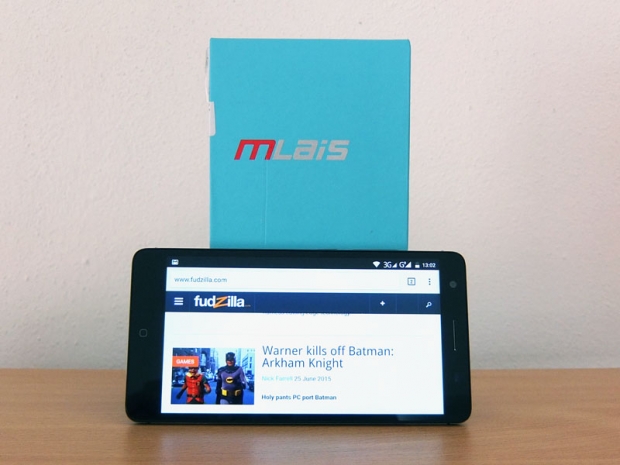Index
Mlais M7 Specs and Performance
This is where it gets a bit more interesting. Value phablets usually come with quite good specs, but many are ruined by lacklustre build quality or poor software. Luckily, that’s not the case with the Mlais M7, since build quality is a non-issue and the software is, well, pretty much stock Android 5.0.
There are a few compromises, here is a closer look at the Mlais M7 spec:
- SoC: MediaTek MT6752, 28nm HPM
- CPU: Eight 64-bit Cortex-A53 cores clocked at up to 1.7GHz
- GPU: ARM Mali-T760 MP2 at up to 700MHz
- RAM: 3GB
- Storage: 16GB internal storage (partitioned), microSD slot up to 64GB
- Display: 5.5-inch 720p IPS panel, Gorilla Glass 3
- OS: Android 5.0
- Rear camera: Sony IMX135 13-megapixel sensor
- Front facing camera: 5-megapixel sensor
- Battery: 2600mAh lithium polymer, user-replaceable
- Dimensions: 149.5 x 76.8 x 8.6 mm (5.88 x 3.02 x 0.34 inches)
- Weight: 160g
- WiFi and Bluetooth: 802.11b/g/n WiFi and Bluetooth 4.0
- Sensors: ambient light, direction, accelerometer, compass, proximity, pressure, GPS, A-GPS, fingerprint scanner
- SIM card: dual SIM (micro and standard SIM), dual standby
- Network support:
- 2G GSM: 850/900/1800/1900MHz
- 3G WCDMA: 850/900/1900/2100MHz
- 4G FDD-LTE: B1/3/7/20 800/1800/2100/2600MHz
So what’s missing? Not a lot – since this is not designed to be a high-end device, most of the omissions are understandable. Pixel junkies could complain about the 720p display, but the good news is that display quality is very good.
One thing missing from the spec sheet is NFC support. While it’s still not a deal-breaker for most consumers, it would have been a nice addition (and shouldn’t add too much to the price anyway).
Camera geeks could also point out that the Sony IMX135 sensor has been around for a while, and that the IMX214 would have been a better choice. There is a problem though – Sony is having a hard time keeping up with demand for the IMX214, so the IMX135 is still widely used. In terms of specs, the IMX135 is not that far behind the IMX214 - you still get the same megapixel count and same pixel size. However, the IMX214 supports a couple of advanced features, like HDR video.
Nit-pickers will always find something to complain about, but they won’t find much more to whine about. You still get a very fast processor, 3GB of RAM, a fairly complete package in terms of sensors and just about everything else. The decision to use 3GB of memory on a 720p device might sound like a case of marketing trumping engineering, but the subjective feeling is that it makes a difference in some situations. Android has good memory management – we’ve used Android 5.0 on devices with 1GB, 2GB, 3GB and 4GB of memory, and the system always manages to make the most of it (well, just barely on 1GB). In layman’s terms, more stuff is dumped into the RAM, which means the system can access it a lot faster than from internal storage. It improves responsiveness, especially when you have loads of apps running in the background. Flicking through apps on the Mlais M7 is a breeze, even when you’re running loads of demanding apps.
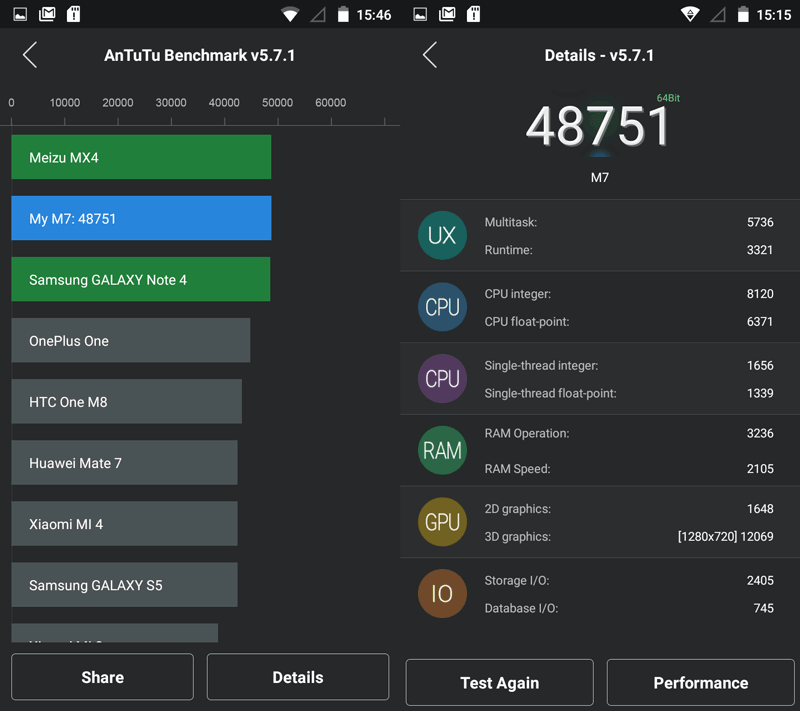
In AnTuTu, the Mlais M7 scored an admirable 48751. Not bad for a sub-$200 phone.
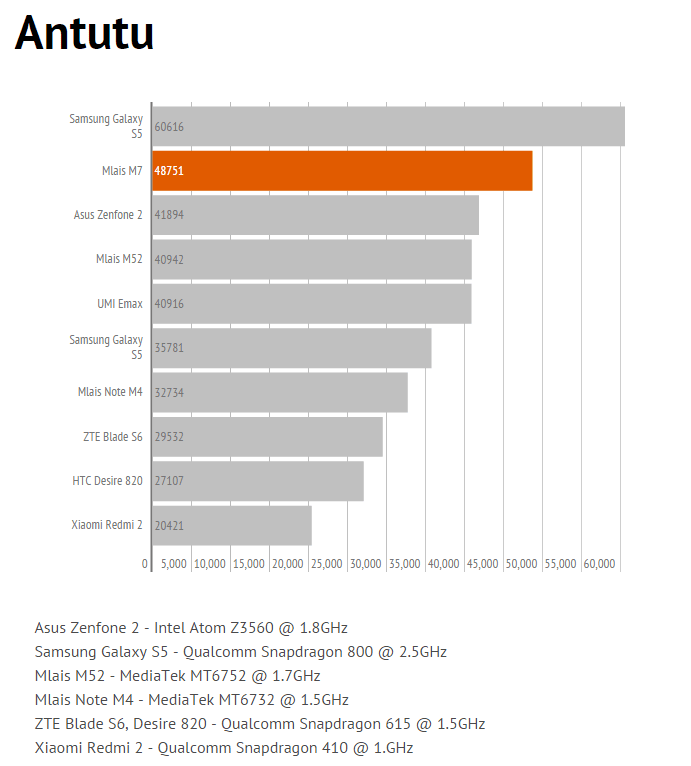
In 3Dmark Ice Storm we got an unimpressive result. However, we should note that the Mlais M52, with the same processor and less RAM, scored more than 10,000, running Android 4.4. We can only assume that we are looking at a software issue - with this sort of hardware, the M7 could have (and should have) scored a bit more.
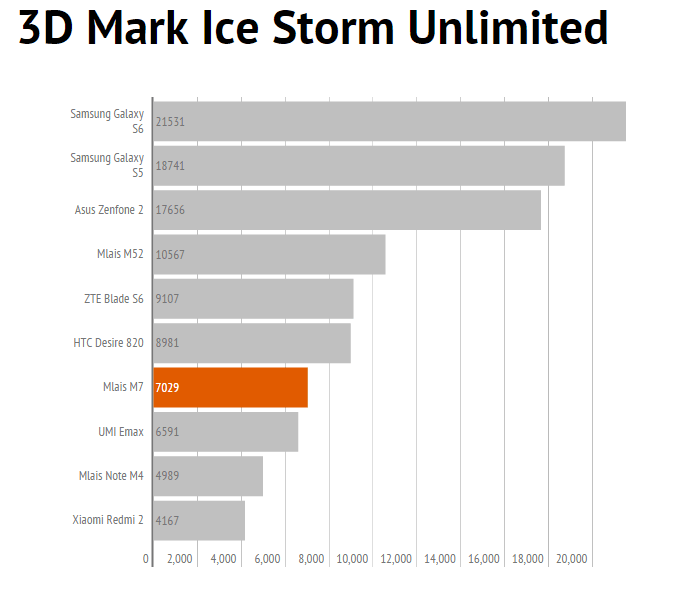
In Basemark OS II the Mlais M7 scored 1007. It's not a record-breaking result, but it's relatively close to Samsung's 2014 flagship and the Asus Zenfone 2.
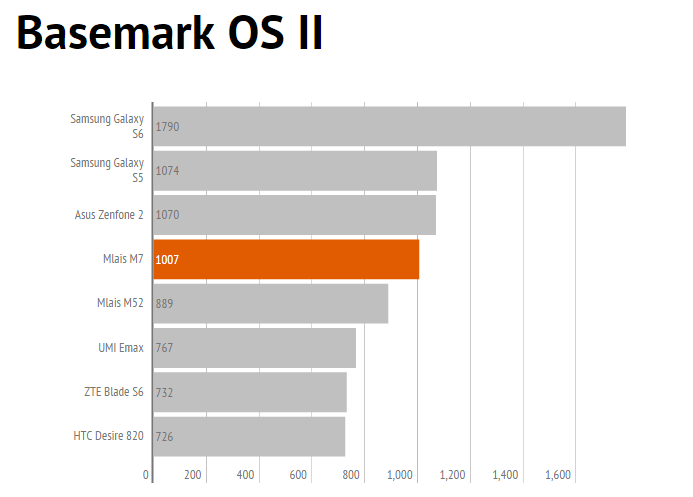
All in all, performance is not an issue.

